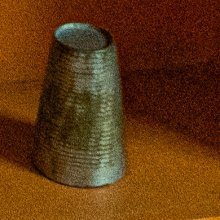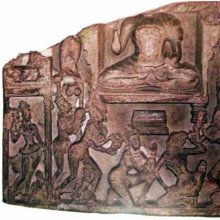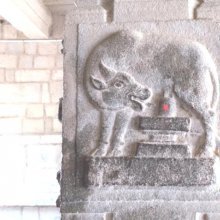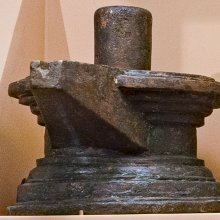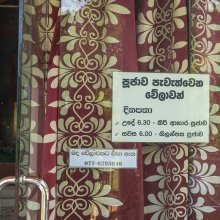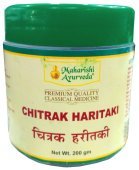Milk: 5 definitions
Introduction:
Milk means something in Hinduism, Sanskrit, Tamil. If you want to know the exact meaning, history, etymology or English translation of this term then check out the descriptions on this page. Add your comment or reference to a book if you want to contribute to this summary article.
Images (photo gallery)
(+8 more images available)
In Hinduism
Vastushastra (architecture)
Source: Shodhganga: Elements of Art and Architecture in the Trtiyakhanda of the Visnudharmottarapurana (vastu)Milk (of the buffalo) was traditionally used in crafting Hard Cement, which was used as a Material for the Construction of Temples and other buildings, according to the Viṣṇudharmottarapurāṇa, an ancient Sanskrit text which (being encyclopedic in nature) deals with a variety of cultural topics such as arts, architecture, music, grammar and astronomy.—In the Viṣṇudharmottarapurāṇa, five procedures of preparing the vajralepa are suggested.—The third variety of vajralepa was the mixture of the horns of bull and buffalo, skin of goat, milk of buffalo, juice of bimba and kapittha.

Vastushastra (वास्तुशास्त्र, vāstuśāstra) refers to the ancient Indian science (shastra) of architecture (vastu), dealing with topics such architecture, sculpture, town-building, fort building and various other constructions. Vastu also deals with the philosophy of the architectural relation with the cosmic universe.
Shilpashastra (iconography)
Source: Shodhganga: Elements of Art and Architecture in the Trtiyakhanda of the Visnudharmottarapurana (shilpa)Milk is used for smoothing the plaster on a wall, while creating the Canvas according to the principles of the ancient Indian art of Painting (citra), according to the Viṣṇudharmottarapurāṇa, an ancient Sanskrit text which (being encyclopedic in nature) deals with a variety of cultural topics such as arts, architecture, music, grammar and astronomy.—The Viṣṇudharmottarapurāṇa states that the coating of the paste should be very smooth, even and finely distributed and the proportion should not be either very thick or thin. It is also mentioned in this book that if the coating is not perfectly set on a wall, it should be smoothened by the paste made with clay, oil and sarjarasa i.e., the resinous exudation of the sāla tree and again the wall should be polished with the constant sprinkle of milk. The Viṣṇudharmottarapurāṇa advices that after plastering the wall, the painter should proceed to start the Painting work.

Shilpashastra (शिल्पशास्त्र, śilpaśāstra) represents the ancient Indian science (shastra) of creative arts (shilpa) such as sculpture, iconography and painting. Closely related to Vastushastra (architecture), they often share the same literature.
Yoga (school of philosophy)
Source: ORA: Amanaska (king of all yogas): A Critical Edition and Annotated Translation by Jason BirchMilk can be denoted by the Sanskrit terms Kṣīra or Dugdha , according to the Niśvāsakārikā (Jñānakāṇḍa verse 12.162-63).—Accordingly: “When a Brahmin, Kṣatriya, Vaiśya or Śūdra is a knower of the highest reality, [then] no distinction exists [between them], just as no division exists [between] fire placed in fire, milk (kṣīra) in milk [or] water poured into water. [This] truth has been spoken by Śiva”.

Yoga is originally considered a branch of Hindu philosophy (astika), but both ancient and modern Yoga combine the physical, mental and spiritual. Yoga teaches various physical techniques also known as āsanas (postures), used for various purposes (eg., meditation, contemplation, relaxation).
Ayurveda (science of life)
Agriculture (Krishi) and Vrikshayurveda (study of Plant life)
Source: Shodhganga: Drumavichitrikarnam—Plant mutagenesis in ancient IndiaMilk (denoted by the Sanskrit terms Dugdha, Kṣīra) is used in various recipes for bio-organic manipulation of plants/flowers/fruits, according to the Vṛkṣāyurveda by Sūrapāla (1000 CE): an encyclopedic work dealing with the study of trees and the principles of ancient Indian agriculture.—For example, while describing the recipe for manipulating the taste of fruits (on the tree), according: “A tree which normally produces pungent fruits starts producing fruits sweet like the nectar if thickly smeared at the root with the paste of the mixture made out Embelia ribes, Glycyrrhiza glabra, barley, milk (dugdha) and jaggery”.

Āyurveda (आयुर्वेद, ayurveda) is a branch of Indian science dealing with medicine, herbalism, taxology, anatomy, surgery, alchemy and related topics. Traditional practice of Āyurveda in ancient India dates back to at least the first millenium BC. Literature is commonly written in Sanskrit using various poetic metres.
Languages of India and abroad
Tamil dictionary
Source: DDSA: University of Madras: Tamil LexiconMilk (மில்க்) noun < Urdu milk. Property; சொத்து. [sothu.] (C. G.)
Tamil is an ancient language of India from the Dravidian family spoken by roughly 250 million people mainly in southern India and Sri Lanka.
See also (Relevant definitions)
Starts with (+9): Goat milk, Milk and wine lily, Milk bush, Milk convolvulus, Milk hedge, Milk pear, Milk pudding, Milk thistle, Milk tree, Milk weed, Milk-ort, Milkaidhulkai, Milkainu, Milkaranai, Milkaunu, Milkberry, Milkiyat, Milkiyata, Milkiyatistimirar, Milkman.
Ends with: Buffalo milk, Butter milk, Cow milk, Goat milk, The herb of milk.
Full-text (+3445): Kshira, Dadhi, Stanya, Payas, Dugdha, Pancagavya, Gorasa, Payasa, Pancamrita, Doha, Udhasya, Kilata, Paramanna, Dogdhri, Dohana, Takra, Dharoshna, Bahudugdha, Gokshira, Somaja.
Relevant text
Search found 335 books and stories containing Milk; (plurals include: Milks). You can also click to the full overview containing English textual excerpts. Below are direct links for the most relevant articles:
Charaka Samhita (English translation) (by Shree Gulabkunverba Ayurvedic Society)
Chapter 27i - The section on Cow’s milk (Gorasa) < [Sutrasthana (Sutra Sthana) — General Principles]
Chapter 1 - The Quest for Longevity (dirgha-jivita) < [Sutrasthana (Sutra Sthana) — General Principles]
Chapter 10 - Successful Enema therapy (basti-siddhi) < [Siddhisthana (Siddhi Sthana) — Section on Successful Treatment]
Rig Veda (translation and commentary) (by H. H. Wilson)
Bharadvaja-srauta-sutra (by C. G. Kashikar)
Manusmriti with the Commentary of Medhatithi (by Ganganatha Jha)
Verse 8.231 < [Section XXXIX - Disputes between Owner and Keeper]
Verse 5.8 < [Section II - Objectionable Food]
Verse 2.74 < [Section XVII - Rules of Study]
Rasa Jala Nidhi, vol 3: Metals, Gems and other substances (by Bhudeb Mookerjee)
Part 5 - Incineration of Yellow Diamonds < [Chapter XIII - Gems (1): Vajra or Hiraka (diamond)]
Part 2 - Purification of copper < [Chapter III - Metals (3): Tamra (copper)]
Part 2 - Purification of tin < [Chapter VI - Metals (6): Vanga (tin)]
The Markandeya Purana (Study) (by Chandamita Bhattacharya)
Used and Prohibited Food and Vegetables for Śrāddha Ceremony < [Chapter 2]
Superstitions Related to Home < [Chapter 2]
Proper Food for Yogins < [Chapter 2]
Related products
(+312 more products available)
